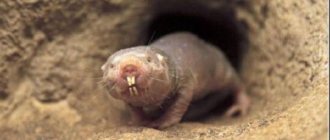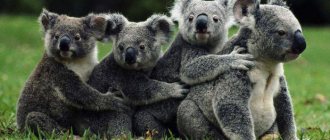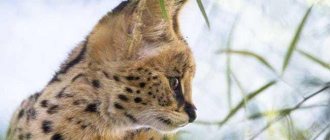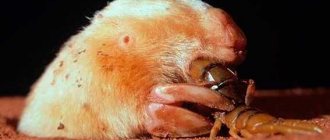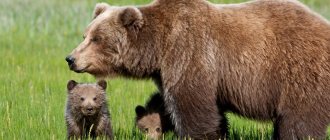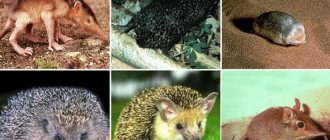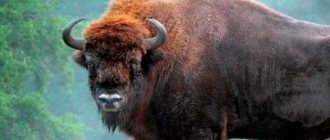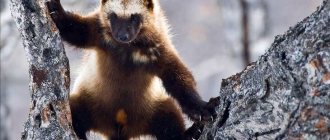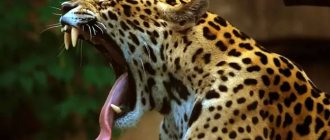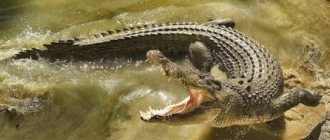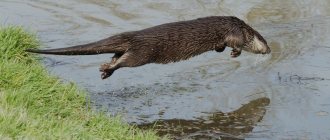An animal called a mule is created by crossing mares and donkeys. This hybrid is distinguished by high endurance and strength, but at the same time calm and peaceful disposition.
- 5.1 Hybrid characteristics
- 6.1 Rare mating events
Description
— Advertising —
The physique of a mule is a combination of the characteristics of donkeys and mares, his parents. The heritage of a donkey is the legs and head, as well as the neck. A mule's ears are narrower than those of a donkey, but they are longer and their shape resembles that of a horse. The animal has a mane, bangs and a tail, which makes it resemble a horse. The sound a mule makes is a cross between a donkey's braying and a horse's neighing. The coloration is varied, characteristic of both donkeys and horses.
Appearance of a mule
The main feature of a mule in its external characteristics is the presence of all the characteristics from both parents. Such an animal, as a rule, takes its head and limbs from a donkey. From horses, mules inherited a curved noble neck. The unique fact is that even a mule bred from an Arabian horse will have such a neck. The hairline is of a mixed type; the animals also inherited a hard and thick mane, tail and bangs from the ancestors of horses.
But as for color, everything depends on nature, since a mule can take on either the color of a horse or the color of a donkey. If a Pinto horse was involved in mating with a donkey, the resulting mule will not take exclusively the pegasus coloring of the mother. It is impossible to predict the dimensions and dimensions of a mule in advance, since they can be anything. Small mules can be up to 90 cm tall, but there are larger ones.
The exterior of a mule is also difficult to predict, since it may be based on prerequisites from both parents. In practice, it has been established that mules are born slightly taller from their sires. The animals are early maturing, as by the age of two they begin to be tamed to work.
Disadvantages and differences
The only drawback of the breed is that it is sterile. There are riding, harness and pack mules, depending on the main branch of its use on the farm. Mules should be distinguished from hinnies, which are the offspring of stallions and donkeys. There are special races in which mules participate.
Weight and height
— Advertising —
The weight of a mule is determined by the weight of its mother. The height at the withers of a draft mule is 1.1-1.6 meters. Weight ranges widely from 300 to 600 kg. A draft mule is always larger than a pack mule. The height of the pack animal is from 110 to 140 cm, weight is 300-400 kg.
What is the name of a female donkey?
There are several designations for female animals of this group:
- In the classic designation, a female donkey was called an ass. But in the 16th century, on the territory of modern Russia, the Turkic word “donkey” began to be used to designate female animals of this species
- The word "donkey" was previously used exclusively in relation to all African donkeys that were domesticated by humans
- A female mule is called a "mule"
Thus, we found out the following:
- Donkey and donkey are representatives of the same animal species
- A mule is a cross between a mare and a donkey.
- All animals have a number of positive and negative qualities
- Mules live longer
- Donkeys and donkeys are more stubborn
- Mules are trainable and have a high life expectancy
- Donkeys and donkeys tend to be slower
Nutritional Features
The mule is absolutely picky and undemanding in nutrition. This is a herbivore that is content with any plant food. It is its unpretentiousness and undemanding diet that is one of the significant advantages of the breed in breeding and use in the household as a labor force.
Natural enemies of hinnies
Photo: Hinny in nature
A hinny is an animal that is kept exclusively at home. Therefore, it has no natural enemies. Thanks to his strong immunity, he rarely gets sick, so there are practically no specific diseases in animals.
However, zoologists still describe a number of problems and threats to the life and health of animals. The consequence of achondroplasia is mutations in the fetus and newborn foals. Signs of mutation and pathology in newborns are a shortened muzzle, short limbs relative to the body, and a too short torso.
These animals are not prone to diseases of the gastrointestinal tract, hooves, or joint diseases. In the entire history of the existence of the hinny, these diseases have never been recorded.
There are several pathologies that can sometimes occur in these animals:
- vitamin deficiency . Occurs due to poor, incorrect or unbalanced nutrition. Manifests itself in lethargy, decreased performance, and hair loss.
- epizootic lymphangitis . An infectious disease caused by cryptococcus.
- SAP . An infectious disease that is caused by specific bacteria. If a hinny is diagnosed with this pathology, it is euthanized, since it poses a danger not only to other animals, but also to humans.
- accidental disease . The causative agent is considered to be trypanosome. The animal's body becomes covered with dense crusts, the genitals enlarge and become dense, and in severe cases, paralysis of the entire rear half of the body is observed.
Behavior
According to the work performed on the farm, there are two types of mules: pack and draft mules. The traction force of an animal is 18-20% of its mass. Typically, all male mules are castrated at the age of 1.5-2 years. They are gradually accustomed to work from the age of 2, and starting from the age of 4 the animals work at full capacity. According to the methods of keeping adult animals and young animals in mule breeding, they are similar to horse breeding.
Signs of a hybrid
A mule has the physical characteristics of both a horse and a mule. From mares he inherits body size and the ability to move quickly, and from donkeys he inherits endurance and high performance.
Advantages and disadvantages
Mules have a longer life expectancy than horses (up to 40 years), they are less susceptible to various diseases, and are undemanding in terms of food and care. In addition, compared to horses, mules are more durable. They are capable of carrying large loads. The only thing they are inferior in is their ability to overcome high obstacles. But their high efficiency and unpretentiousness practically eliminate this drawback. Donkey stubbornness is also uncharacteristic for a mule, but if the mule is tired, then it will not work. If a horse is able to work until he falls exhausted, then such behavior is uncharacteristic for a mule, but he is not lazy. The animal has a developed mind and will not tolerate cruel treatment. The mule always behaves very patiently with its owner and is ready to do for him everything that the animal needs and is capable of.
Sports disciplines
Mules are also used in sports disciplines, like horses: under saddles, in harness, in dressage. Given their endurance and strength, they are able to carry more weight than horses of the same size.
Where does the hinny live?
Photo: Loshak in Russia
Central Asia is considered the historical homeland of the hinny. Today, Central Asian countries remain a place where these donkey-stallion hybrids remain in demand.
Where do hinnies live besides Central Asia:
- Korea;
- Transcarpathia region;
- southern regions of Europe;
- African countries;
- North America;
- South America.
It is very easy to keep hinnies, as they are not demanding in terms of living conditions and food supply. Animals are kept in regions where people have to do hard work, cultivate the land, harvest large crops, and fight for a long time. They are indispensable in mountainous regions, where they are used to transport goods from one point to another.
Interesting fact: The advantage of animals is the special properties of their hooves. There is no need to shoe the animals, but even without shoes they can easily walk through the mountains, through mud, and snow-covered roads.
Within the African continent, as well as in South and North America, ungulates are used to transport weapons, ammunition and military uniforms. In some countries, with their help, supplies of ore from mines and mining sites to different regions have been established.
No special conditions are required to keep the animal. He will only need a stall and dry bedding, as well as sufficient water and food. Also, ungulate breeders note that it is advisable to sometimes clean their hooves and comb their fur and mane. If a hinny has enough food and water, it can easily tolerate almost any climate and weather conditions.
Reproduction
Breeding mules is not difficult; they are born by crossing male donkeys and horses. Male mule deer are sterile, as are most females.
Rare mating events
Cases have been described in which offspring were obtained when a female mule mated with a stallion and a donkey, as well as one case that occurred in China when a female hinny had a cub from a male donkey.
Lack of ability to reproduce
The lack of ability to reproduce is associated with a different number of chromosomes: a horse has 64, and a donkey has 62.
Lifespan
The lifespan of a mule is from 35 to 40 years. This hybrid is highly resistant to various diseases, as well as undemanding to care and food.
Breeding problems
Like all interspecific hybrids, mules are sterile. There is information about isolated cases when mules gave birth to normal healthy foals from donkeys or stallions. Male mules are completely incapable of reproducing their own kind. To breed a hybrid breed on your farm, you need to constantly cross mares with donkeys. It is impossible to get offspring from 2 mules of different sexes.
The reason for this lies in the chromosome set of the hybrid animal. It inherits half of the set from the mother (32 chromosomes) and half from the father (31 chromosomes). In total, the offspring will have 63 chromosomes. Such a set is not divided in half, and the germ cells do not acquire maturity.
But both males and females have a normal sexual instinct. When working with them, mule breeders note an even more pronounced temperament in the stallions. Due to the fact that animals become aggressive and uncontrollable when sexually aroused, it is customary to castrate males.
Threats
Mules begin to be used in work from the age of 4 years. Their maintenance is almost no different from horse breeding. Mule breeding is common in Europe, America, Africa, and Asia. Their numbers are constantly increasing. Thus, in the middle of the last century, the population of mules in the world numbered 14,000,000 animals. Now it is estimated at 16,000,000. The mule is a necessary and useful animal for people, and therefore they are bred everywhere, and interest in this hybrid equine representative remains at a high level. And there are no threats to the existence of this species or a decrease in population size.
Who is more stubborn, smarter: a donkey or a donkey?
Both donkeys and donkeys are characterized by:
- Stubbornness
- Clumsiness
- Low noise level
- Low movement speed
- Laziness
- Calm
- Patience
- Pickiness in food and living conditions
Often this animal can stop halfway for no apparent reason. In such a situation, the owner is unlikely to be able to force the donkey or donkey to continue moving. But, despite this fact, they are capable of covering long routes and helping to transport large cargo.
Let's also say a few words about mules. Since mules have the genes of a horse and a donkey, they can inherit certain character traits.
Animal stubbornness
As a rule, representatives of these animals are characterized by:
- Agreeableness
- Caution
- High degree of performance
- Loudness
- Shyness
- High movement speed
Laziness and stubbornness may also be inherent, but only in the case of aggressive behavior of the owner. Also, mules often participate in sports races, so they can be trained from an early period, but it is important not to show aggression.
Unambiguously answer the question: “Who is smarter than a donkey, a donkey or a mule?” - impossible. All representatives of these animals have both positive and negative aspects of behavior. And donkeys and donkeys are equally stubborn. Although females are more often lenient and more susceptible to the influence of their owner.
Interesting Facts:
- During the Middle Ages, clergy rode mules. The nobles also readily used such a convenient means of transportation. When the Great Discoveries began, these animals were brought to America. Mules began to be bred in Mexico and used in the transportation of goods, as well as in the mines that were engaged in the extraction of silver. The Spaniards kept animals in large herds on plantations. During military operations, mules were used to transport artillery guns, provisions, and the wounded.
- The centers of mule breeding were the Iberian Peninsula, Catalonia and Andalusia. The export of mules from Spain continued actively until the beginning of the 19th century. For example, the King of Spain gave George Washington a large black mule as a gift. He was nicknamed “the royal gift”, and he is the founder of mule breeding in the United States. Americans often used mules to transport artillery cannons in armies, as well as to take wounded soldiers from the battlefield. There is an American legend about twenty mules that transported borax from Death Valley and other mines in the western United States. In cities, they even deliberately built wide streets to allow mule teams to turn around.
Use of animals
Both crossbreeds are most often used as pack and working animals, but their activities are not limited to this.
In some countries, mules are also used in classical sports - dressage, driving, and various shows. Their submissive nature made these animals very popular for side-saddle riding, as well as for children's sports. In the USA, endurance competitions among mules are very popular - the animals must overcome a certain distance with the maximum possible load. Not only strength is taken into account, but also appearance, correctness of appearance, and obedience.
Crossbreeds of donkeys and horses have also begun to be actively used in equestrian tourism. Strong hooves and endurance, fearlessness, all-terrain ability and ease of riding play an important role in this increasingly popular equestrian discipline.

